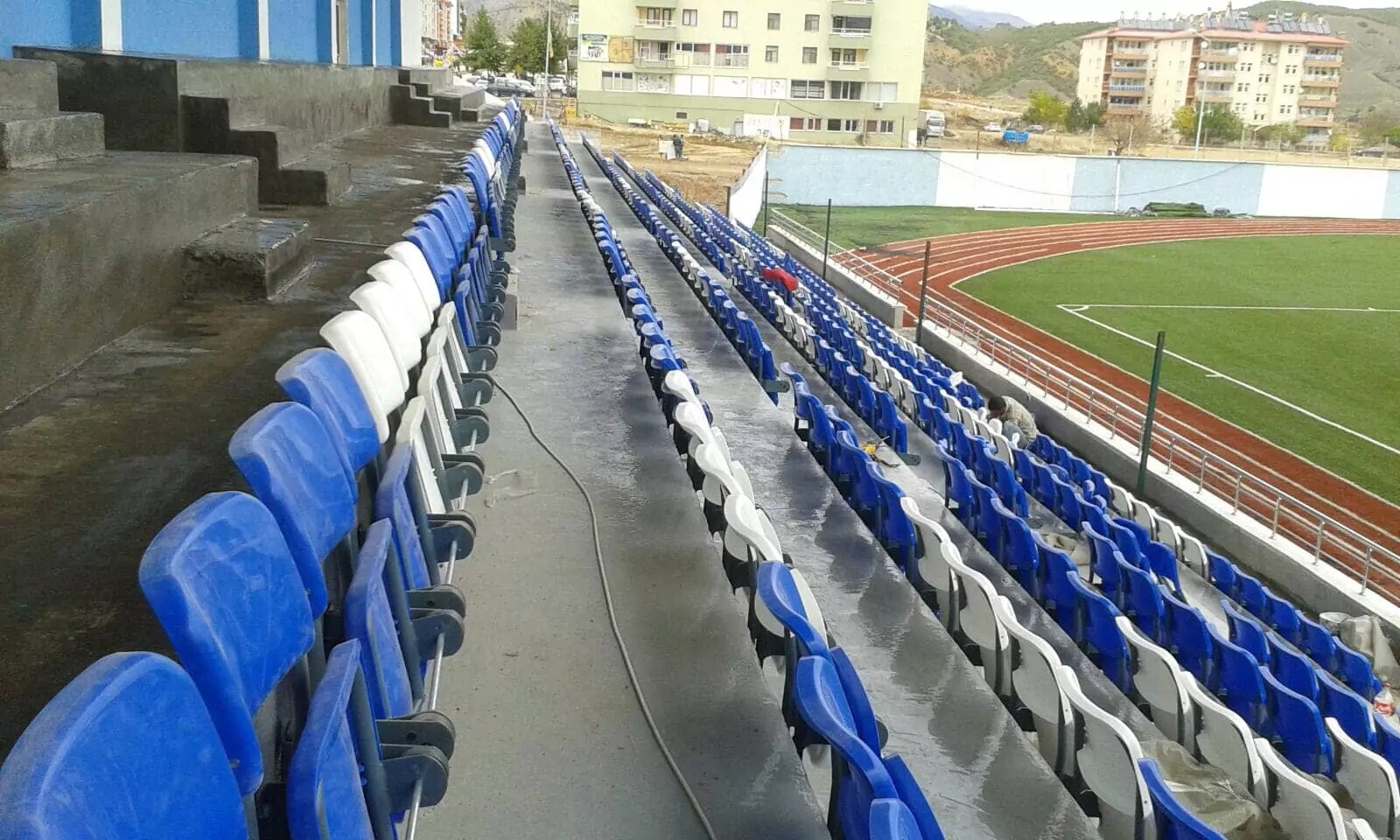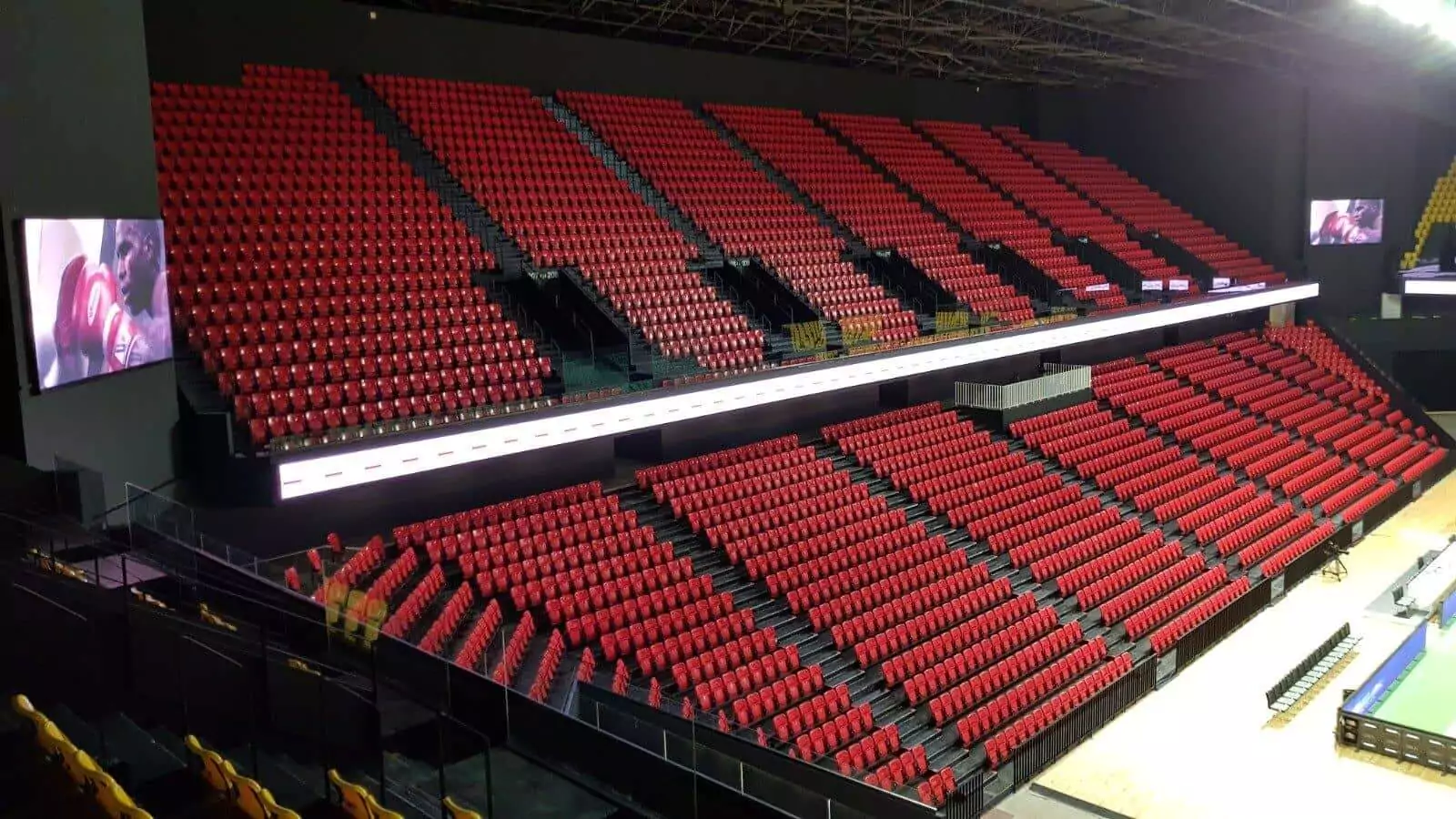Stadium Chairs Innovation
Stadium Chairs: Innovation, Durability, and the Future of Global Arenas
Stadiums are more than just sporting venues—they are cultural landmarks where millions of fans gather to celebrate football, rugby, cricket, athletics, and concerts. At the heart of every stadium experience lies a simple yet critical component: the stadium chair. Modern stadium chairs are no longer basic plastic seats; they represent a combination of innovation, safety, comfort, and sustainability that defines the spectator experience.

Why Stadium Chairs Matter
Every fan interacts directly with their chair for hours at a time. This makes stadium chairs one of the most important investments in venue design. High-quality stadium chairs deliver:
Comfort: Ergonomic design for long matches and events.
Durability: Resistance to heavy usage, weather conditions, and impact.
Safety: Compliance with FIFA, UEFA, and ISO standards.
Aesthetic appeal: Enhancing the visual identity of the stadium.
Innovation in Stadium Chair Design
The seating industry has advanced dramatically in recent years. The most important innovations include:
Modular Chair Systems
Quick installation, easy maintenance, and flexible configurations for multi-purpose use.
Smart Seating
Integration of features like charging ports, seat numbering, and data sensors.
Sustainable Materials
Chairs made from recyclable plastics, eco-friendly metals, and low-carbon production processes.
Premium Options
Wider chairs with extra cushioning and leather upholstery for VIP areas.
Global Demand for Stadium Chairs
The market for stadium chairs is expanding rapidly across different regions:
Middle East: Massive investments in preparation for the 2034 FIFA World Cup in Saudi Arabia.
Europe: Renovations for UEFA Euro 2028 and other international tournaments.
Africa: Growing sports infrastructure driven by the Africa Cup of Nations (AFCON).
Asia: Cricket and multi-purpose arena projects boosting demand in India and Southeast Asia.
This growth highlights the central role of stadium chairs in shaping global sports infrastructure.
Balancing Price and Performance
One of the biggest challenges in stadium development is finding seating solutions that balance affordability and durability. Stadium chairs must:
Offer competitive pricing for both public and private projects.
Deliver long-term performance with minimal maintenance.
Adapt to different event types, from football to cultural festivals.
By achieving this balance, stadium operators can ensure sustainable investments.
Case Studies of Stadium Chair Innovation
Tottenham Hotspur Stadium (UK): Incorporates ergonomic seating and modular systems for rapid reconfiguration.
Lusail Stadium (Qatar): Featured premium seating solutions during the FIFA World Cup 2022.
FNB Stadium (South Africa): Upgrades focused on durable and weather-resistant chairs suitable for large crowds.
These venues demonstrate how stadium chairs directly impact fan experience and operational efficiency.
The Future of Stadium Chairs
Looking ahead, the next generation of stadium chairs will emphasize:
Smart connectivity with integrated apps for ordering, stats, and entertainment.
Greater inclusivity, ensuring accessibility for all fans.
Climate-adaptive materials that respond to heat, cold, and humidity.
Sustainability certifications to align with global environmental goals.

Conclusion
The stadium chair has evolved from a simple necessity into a symbol of modernization and innovation in global sports. With the rise of mega-events, sustainability requirements, and fan expectations, stadium chairs are now at the forefront of venue design. By combining comfort, durability, and smart technologies, modern stadium chairs ensure that every fan enjoys not just the game but the complete stadium experience.

